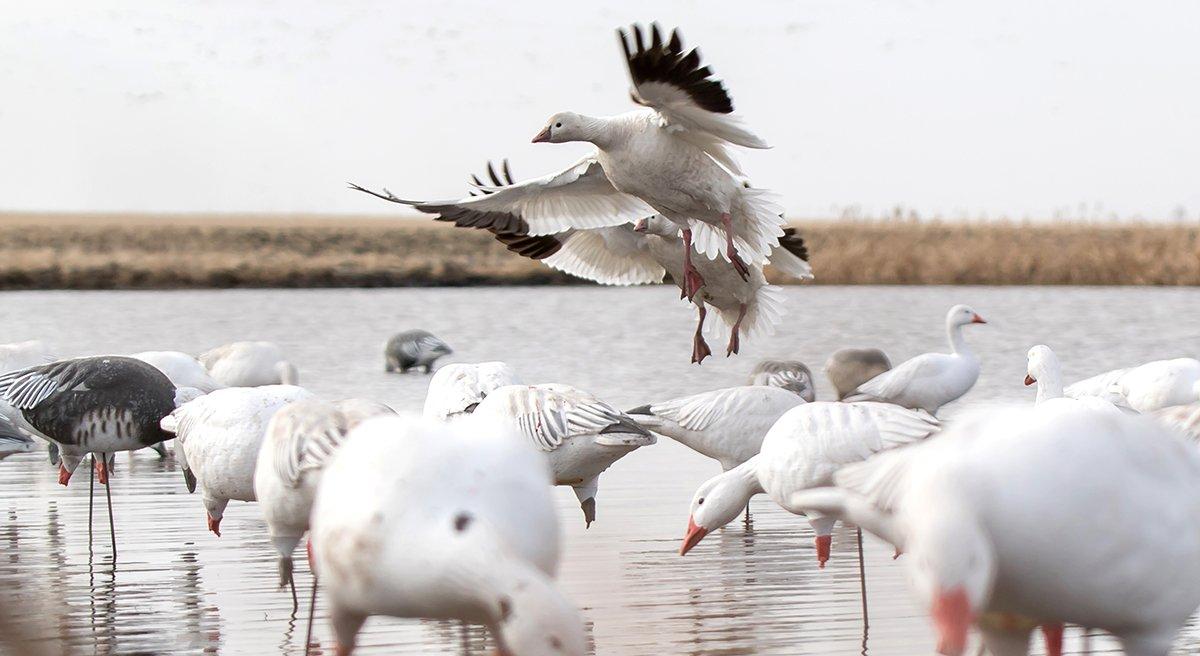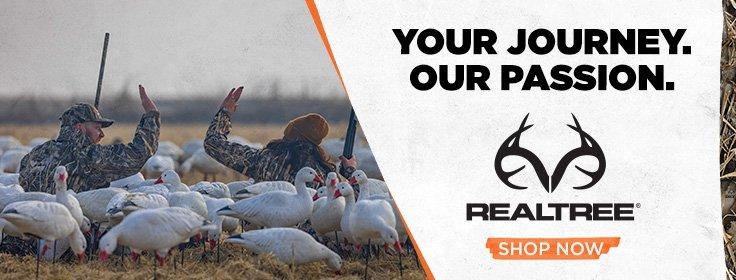Good production at many nesting areas sparks optimism
The duck decoys have been stowed for another year, and the snow goose trailers are out. As one season blends to the next, waterfowlers everywhere wonder what to expect for the Spring 2023 light-goose conservation order season. According to professional and anecdotal reports, spring snow goose hunting will likely range from good to great, depending on the location.
Hunting success during the spring conservation season (for snow, blue and Ross's geese) typically depends on goose production the previous spring, because juvenile birds are easier to decoy than experienced adult geese. In 2022, many goose population counts and banding programs resumed after a two-year hiatus prompted by COVID concerns, and biologists discovered exciting news in many areas, especially the Pacific Flyway.
It's a great, great time to be a Pacific Flyway snow goose hunter, Chris Nicolai, waterfowl scientist with Delta Waterfowl and a leading goose expert, said in a 2022 press release.
Much of the buzz comes from Wrangel Island, a Russian island that's home to a large snow goose colony and produces a major portion of the Pacific Flyway's light goose migration.
They are in their third year of exponential growth, Nicolai said in the release. They completely blew up again. It appears 2022 set a new population record on this nesting ground for snow geese. That beats the old record set in 2020, which dipped just slightly to the all-time No. 2 in 2021.
The news wasn't quite as rosy from the North Slope of Alaska. The Ikpikpuk River and Colville River delta colonies each usually have about 20,000 snow goose nests. But according to sources there, the release said, returning breeding populations were greeted by late-spring conditions that likely negatively affected production to some degree.
In the Central and Mississippi Flyways, reports ranged widely, but it seems likely that hunting for snow and Ross's geese should be average to good.
Several Canadian Arctic areas — including Banks Island, Queen Maud Gulf, Southampton Island, Baffin Island and Western Hudson Bay — are vital nesting areas for mid-continent (Central and Mississippi flyways) lesser snow geese and other geese. Nicolai said reports from those areas were mixed.
Reports were great from South Hampton Island, Baffin Island and Western Hudson Bay, he said. The birds showed up, and production in these areas looks to be well above average.
News from Queen Maud Gulf and Bylot Island appeared to be poor.
Queen Maud Gulf was utterly destroyed for some reason, Nicolai said. The guys who went up there had to work hard just to find any geese, let alone capture them. It's a wonder that one of the biggest breeding aggregations ever seems to have just disappeared off the Earth.
Bylot Island also had very poor production — perhaps the poorest in the past 35 years, Nicolai said.
Veteran guide Cooper Olmstead of Habitat Flats said his experiences this past fall in Canada point toward a banner spring season.
After what we saw this past year up in Saskatchewan, I would say it is going to be a very good spring season, weather permitting, of course, he said. We had high numbers of snow geese and above-average numbers of juvies. Even this fall, we hunted snows a couple of times and shot high numbers of juvies. Everything considered, if the weather cooperates, I think we're going to have a great spring season.
(Don't miss: Snow Goose Guns of the Pros)
Click here for more Realtree waterfowl hunting content. And check us out on Facebook.








